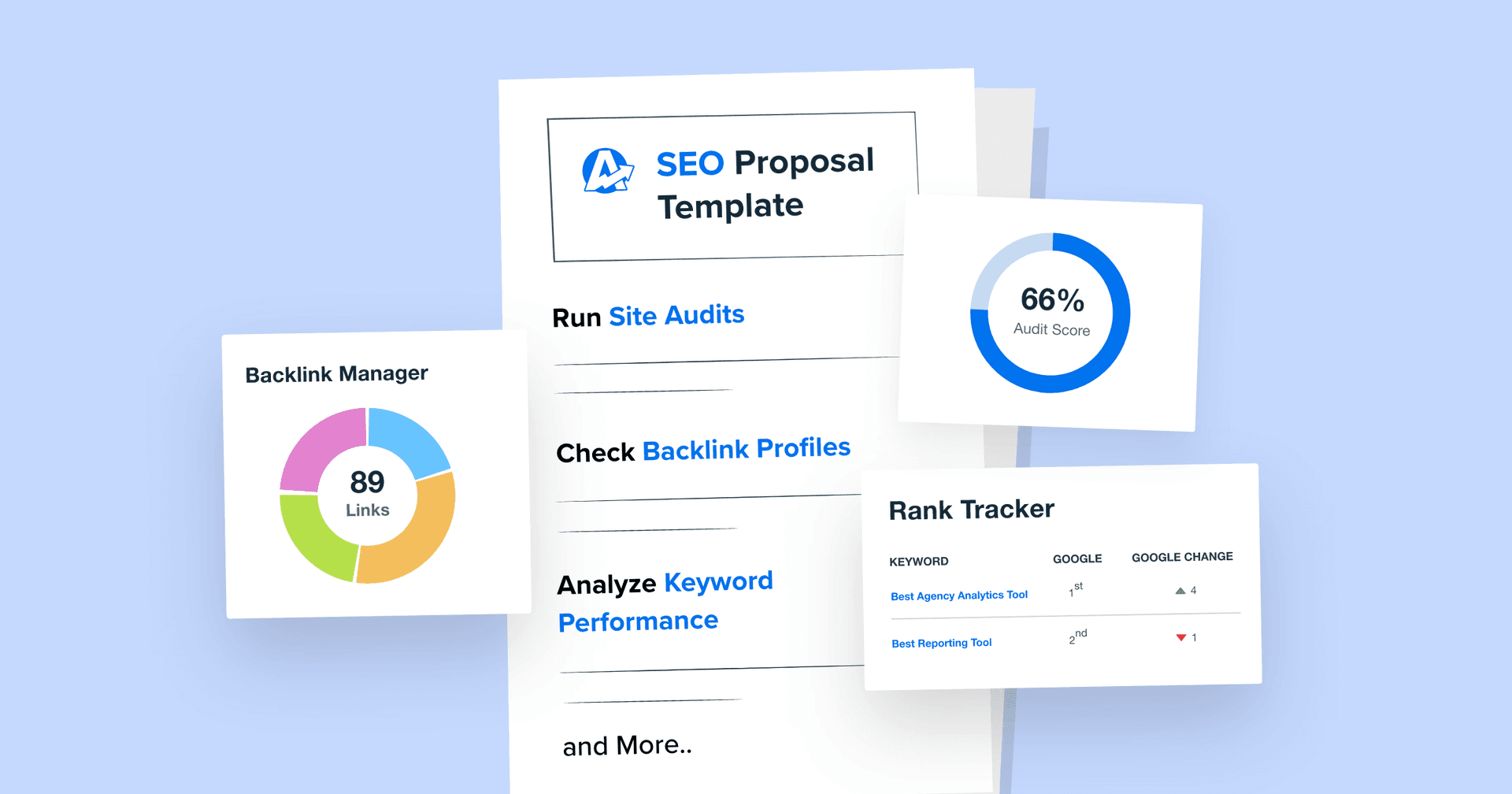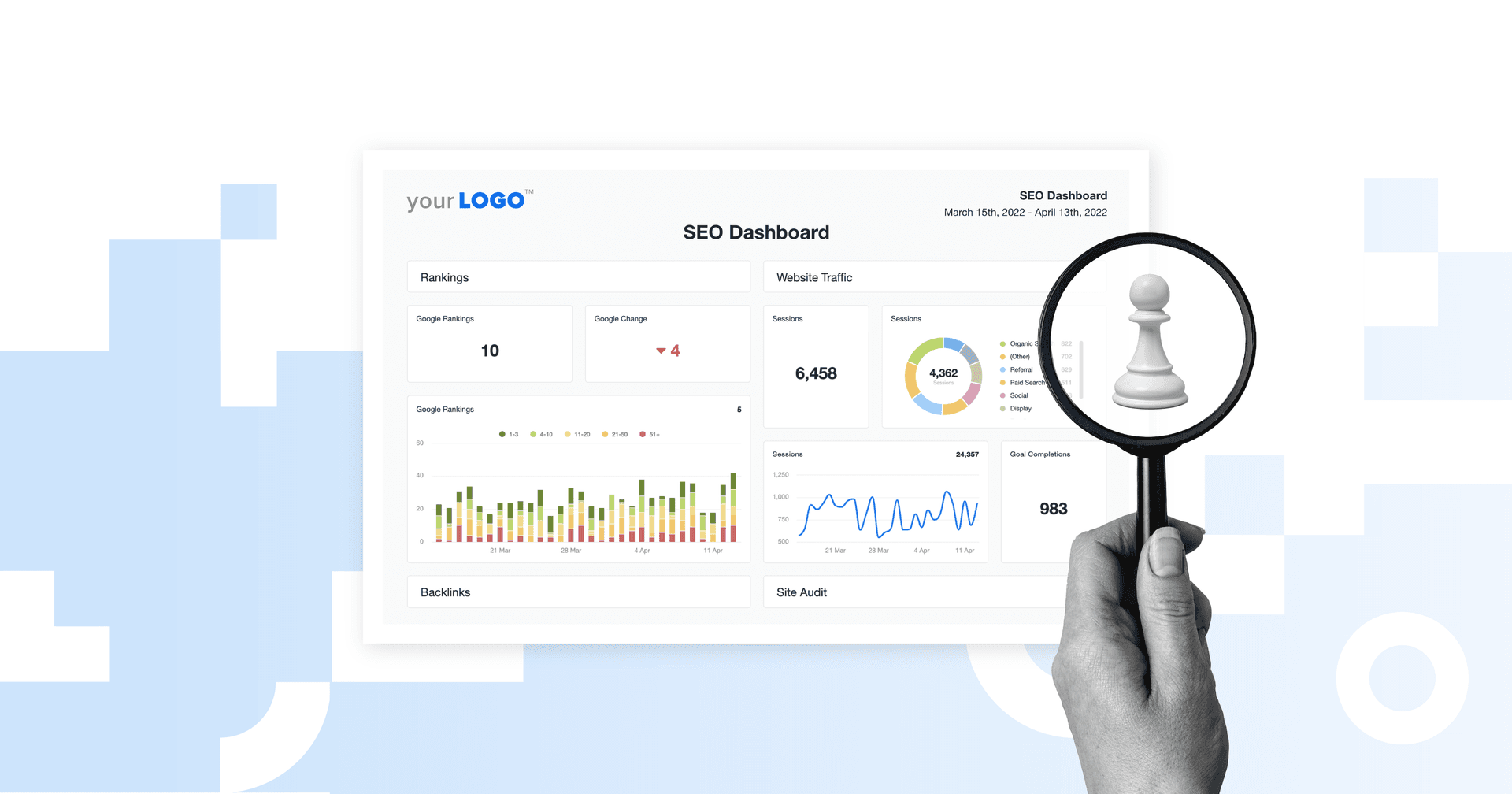Table of Contents
Table of Contents
- What Is Semantic SEO?
- How Traditional SEO Differs From Semantic SEO
- The Difference Between Semantic SEO and Holistic SEO
- Google's Semantic Search Capabilities
- Understanding User Intent in Semantic SEO
- How To Optimize for Semantic SEO
- Designing Semantic SEO Around the User Experience
- Measuring Semantic SEO Success
- Future of Semantic SEO With Google
- Final Thoughts
7,000+ agencies have ditched manual reports. You can too.
Free 14-Day TrialQUICK SUMMARY:
Semantic SEO focuses on meaning, not just keywords. It aligns content with user intent, entity relationships, and topical relevance to improve visibility in modern search engine optimization. This article features expert insights from Brock Murray, co-founder of seoplus+, and explores how semantic SEO reshapes content strategy, technical structure, and performance measurement for search-driven campaigns.
Google updates have long stumped even the most experienced SEO professionals. Just when it seems like the algorithm has been decoded, a new update rewrites the playbook. But as Google has evolved, so has our understanding of what it really values. The focus has shifted from exact-match keywords to something far more nuanced: meaning.
Semantic search engine optimization represents this paradigm shift. Rather than fixating on exact-match keywords, semantic SEO prioritizes context, intent, and the intricate relationships between concepts. It’s an approach that mirrors how people think and communicate, aligning more closely with the actual behaviour of searchers.
This isn't a fleeting trend. Semantic SEO is a foundational component of modern search and reflects the broader transformation of search engines into interpretive systems - tools designed not just to match text, but to understand it.
For digital agencies, this presents both a challenge and an opportunity. It requires a recalibration of strategy: from keyword density and meta tags to language modelling, intent alignment, and knowledge graph integration. Those who optimize for how Google interprets meaning, not just for how it crawls and indexes web pages, are rewarded.
To succeed, it necessitates evolving from keyword tacticians to semantic architects, building content ecosystems that anticipate a user’s intent, connect related ideas, and deliver high-value experiences across every stage of the search journey.
What Is Semantic SEO?
At its core, semantic SEO is about optimizing content for meaning. It’s a deliberate shift from keyword-based optimization to a model that aligns content with user intent, contextual relevance, and the interconnectedness of concepts.
Instead of targeting isolated search terms, semantic SEO seeks to understand and respond to the broader query ecosystem: the why behind the what. It deciphers the deeper intent behind a search, identifies the entities involved (people, places, topics), and user intent to build more complete, helpful content.
This approach reflects how search now operates. Through advances in natural language processing (NLP), machine learning, and entity recognition, Google has transitioned from a lexical indexer to a semantic interpreter. It no longer relies on direct keyword matches alone. Instead, it analyzes meaning, evaluates contextual relevance, and surfaces content that best aligns with the user’s underlying needs, even when the literal search terms are absent from the page.
Semantic SEO acknowledges that human language is fluid, complex, and often imprecise. It embraces this complexity by constructing content that anticipates variations, answers implicit questions, and connects subtopics in a way that delivers holistic value.
In practice, this means:
Integrating semantically related terms
Crafting topic clusters
Leveraging structured data
Optimizing content architecture to reflect intent-driven search behaviour
Semantic SEO in Action
Below are illustrative examples that reveal how this approach transcends keyword literalism to align more closely with human thought patterns and behaviour.
Example 1: “Best laptops for students”
A traditional SEO approach would rigidly anchor content around the exact-match phrase - repeating “best laptops for students” in headings, meta tags, and body copy. Semantic SEO, however, recognizes that search intent is broader than the query string.
Instead of keyword repetition, semantically optimized content contextualizes the user’s intent: affordability, portability, performance, and academic suitability.
Therefore, terms such as “affordable laptops,” “lightweight devices,” or “ideal for note-taking” become relevant entities. Google’s algorithm can now parse this nuanced content and determine its fitness for the original query, despite lexical variations.
Example 2: “How to get rid of a sore throat”
A semantically optimized page might not repeat that phrase over and over. Instead, it could include mentions of “throat lozenges,” “home remedies,” “hydration tips,” and “when to see a doctor.” Google recognizes this topical breadth as indicative of quality and intent alignment, thus rewarding the page with visibility, even without overusing the core query.
Example 3: “Apple” as a search query
This is where semantic SEO intersects with entity disambiguation and knowledge graph reasoning. A query like “Apple” has multiple meanings–fruit, technology company, music label, etc. Without contextual signals, the search engine’s results would be a linguistic guessing game.
But Google’s semantic layer–powered by its Knowledge Graph–connects the dots. A query like “Apple iPhone 15 release date” activates the technology-related entity. Google leverages entity recognition to distinguish “Apple Inc.” from the fruit and to surface content aligned with product launches, tech news, and event dates.
The Shift Toward Semantic Understanding
Google’s evolution toward semantic search has been gradual but deliberate.
The Hummingbird update (2013) marked a turning point, helping search engines understand natural language.
BERT (2019) brought deeper comprehension of context in long or complex queries.
Then came MUM (Multitask Unified Model), which took this even further by understanding and generating language across multiple modalities and languages.
Google’s Knowledge Graph supports this shift. This is a vast database of entities and their relationships. It helps Google connect concepts like “Tesla,” “Elon Musk,” and “electric vehicles” so that it can serve users more relevant search results, even when those connections aren’t explicitly stated in a query.
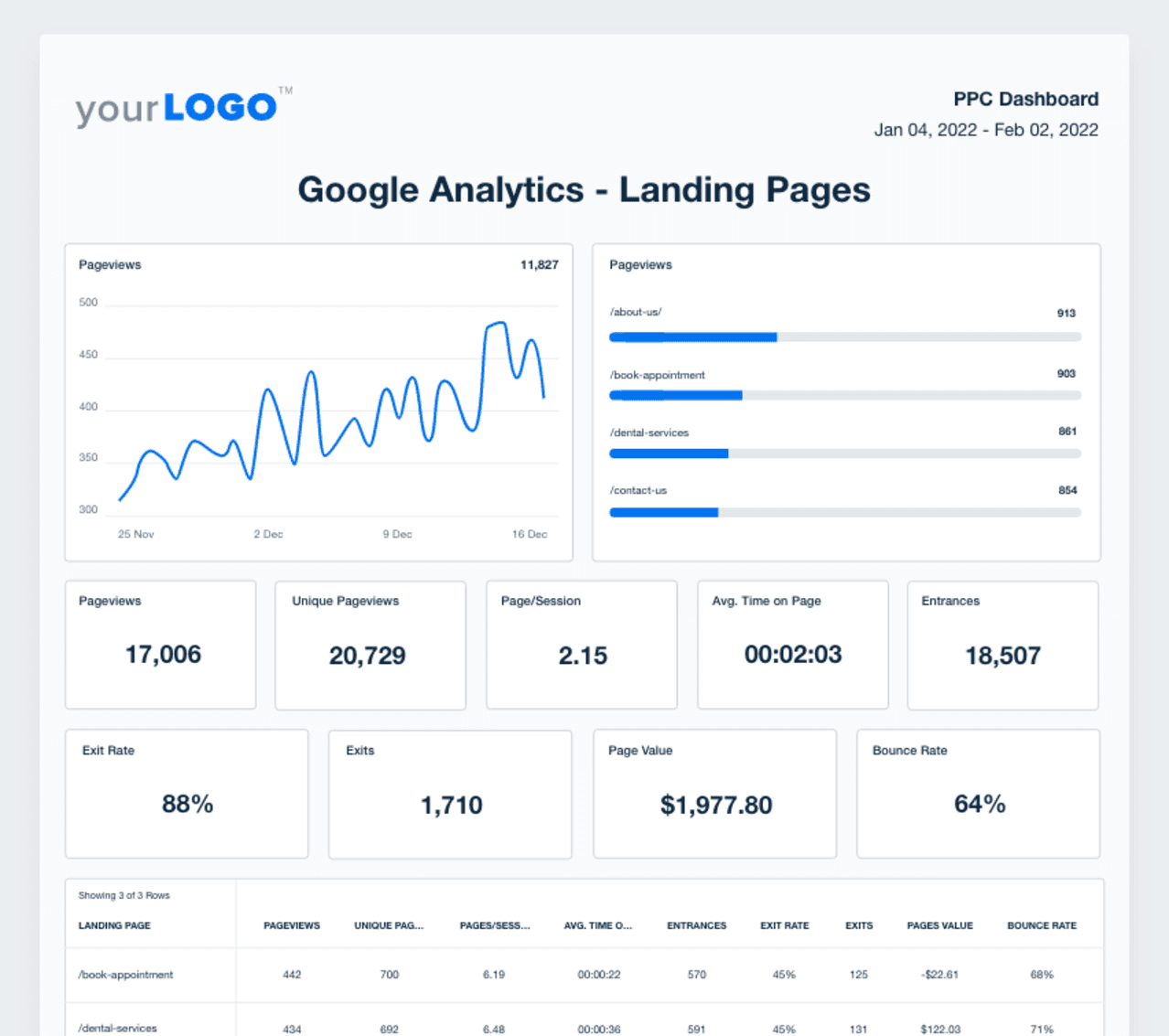
Track landing page performance and set metric alerts to stay up to date on current performance. Try AgencyAnalytics free for 14 days!
How Traditional SEO Differs From Semantic SEO
Understanding semantic SEO begins with recognizing the nuances of language. When someone says they're going to “run an errand,” we don’t picture them sprinting down the street.
Likewise, if a parent searches for a “birthday gift for a 7-year-old,” they don’t expect results that only match those exact words. They might be looking for dolls, building blocks, art kits, or STEM toys–even if they never mention those phrases. Traditional SEO would miss that context. Semantic SEO captures it.
Keyword Matching vs. Meaning Matching
Traditional SEO focused on exact-match keywords, often optimizing a separate page for each variation: “best coffee maker,” “top coffee machines,” “coffee brewers review.” It led to bloated websites with redundant content and little added value for the user. Search engines, at the time, relied on surface-level signals like counting relevant keywords to judge relevance.
Semantic SEO, by contrast, treats content like a network of meaning. Instead of optimizing for isolated phrases, it aims to satisfy a user’s intent by constructing content that connects related topics, answers adjacent questions, and aligns with the user’s journey. It elevates comprehensiveness over repetition, and intent over syntax.
Google’s machine learning models now analyze semantic relationships, entity co-occurrence, and natural language flow, favouring content that demonstrates expertise through topical breadth, clarity, and contextual intelligence.
Attribute | Semantic SEO | Traditional SEO |
|---|---|---|
User Experience | Enhanced; content is conversational and user-centric. | Limited; often keyword-stuffed and unnatural. |
Page Creation | Streamlined; relies on topic clusters and pillar pages. | Fragmented; many posts on similar or scattered topics. |
Authority and Visibility | Boosted; improves relevance and supports contextual interlinking. | Diminished; scattered content weakens site authority. |
The Difference Between Semantic SEO and Holistic SEO
While semantic SEO represents a transformational shift in how content is created and interpreted, it is best understood as a strategic component within a broader, more comprehensive framework: holistic SEO.
Holistic SEO encompasses all factors that affect a website’s performance in search, not just content, but also technical health, user experience, authority signals, and more. It aims to create high-performing websites by aligning every element with the end goal: delivering value to the user.
Why the Distinction Matters
Agencies focused on semantics alone may overlook technical or authority gaps that hold back search engine rankings. Likewise, a site with flawless structure and speed won’t rank without meaningful, semantically-rich content. The two aren’t interchangeable, but they are deeply interconnected.
Holistic SEO provides the infrastructure and scalability, while semantic SEO delivers depth, clarity, and relevance within that structure.
Google's Semantic Search Capabilities
In the early days of SEO, Google delivered results by matching exact words in a query to words on a webpage. If a user typed “best hiking boots,” the top results likely used that phrase the most, even if the content wasn’t particularly helpful.
But as users started asking more natural, nuanced questions, Google's understanding of language had to evolve. Over the past decade, the company has steadily refined its ability to interpret meaning, not just match terms. This transformation has been powered by advancements in natural language processing (NLP), entity recognition, and a series of groundbreaking algorithm updates.
Understanding Language With NLP
Natural language processing allows Google to interpret queries more like a human would. Instead of treating each word as a discrete data point, NLP considers syntax, semantics, and intent. It helps Google identify what a user means, even if they don’t express it perfectly.
For example, when a user asks: “What movie has a guy who gets stuck on Mars?” Google can now interpret the query and surface The Martian, even though none of those exact words appear in the title.
Entity Recognition and the Knowledge Graph
One of Google’s most powerful semantic tools is its Knowledge Graph, which was launched in 2012. It’s a massive database of entities (people, places, things, concepts) and the relationships between them.
Entity recognition helps Google understand that “Mercury” could refer to a planet, a car brand, or a legendary rock band. It also recognizes that “Freddie Mercury” is a person, “Queen” is a band, and “Bohemian Rhapsody” is a song. These relationships are mapped in the Knowledge Graph, enabling Google to connect related concepts and deliver more accurate, relevant results.
BERT: A Breakthrough in Context
In 2019, Google rolled out BERT (Bidirectional Encoder Representations from Transformers), a major leap in its ability to interpret language. BERT understands the context of words based on the words that come before and after them. For instance, it can distinguish between “bank account” and “river bank,” even if both phrases appear in similar queries.
BERT made Google better at interpreting longer, more conversational searches and dramatically improved results for previously misunderstood queries.
MUM: Multimodal, Multilingual, and More
Building on BERT, Google introduced MUM (Multitask Unified Model) in 2021. MUM understands text, images, and even video across 75+ languages. It can draw insights from a variety of content formats and languages to better answer complex queries.
For example, MUM can help someone researching “preparing for a hiking trip in the Andes” by combining safety tips, gear guides, weather forecasts, and traveller experiences, even from non-English content. That level of semantic depth and reasoning far exceeds keyword matching.
Passage Ranking and Featured Snippets
Google’s Passage Ranking update allows the algorithm to rank specific sections of pages. This benefits long-form, semantically rich content, where a single paragraph might directly answer a user’s question.
Featured snippets (those answer boxes at the top of some results) are also driven by semantic understanding. Google pulls the most relevant information based on intent, not just keyword density, and uses structured data and context to decide what high quality content best answers the user's search query.
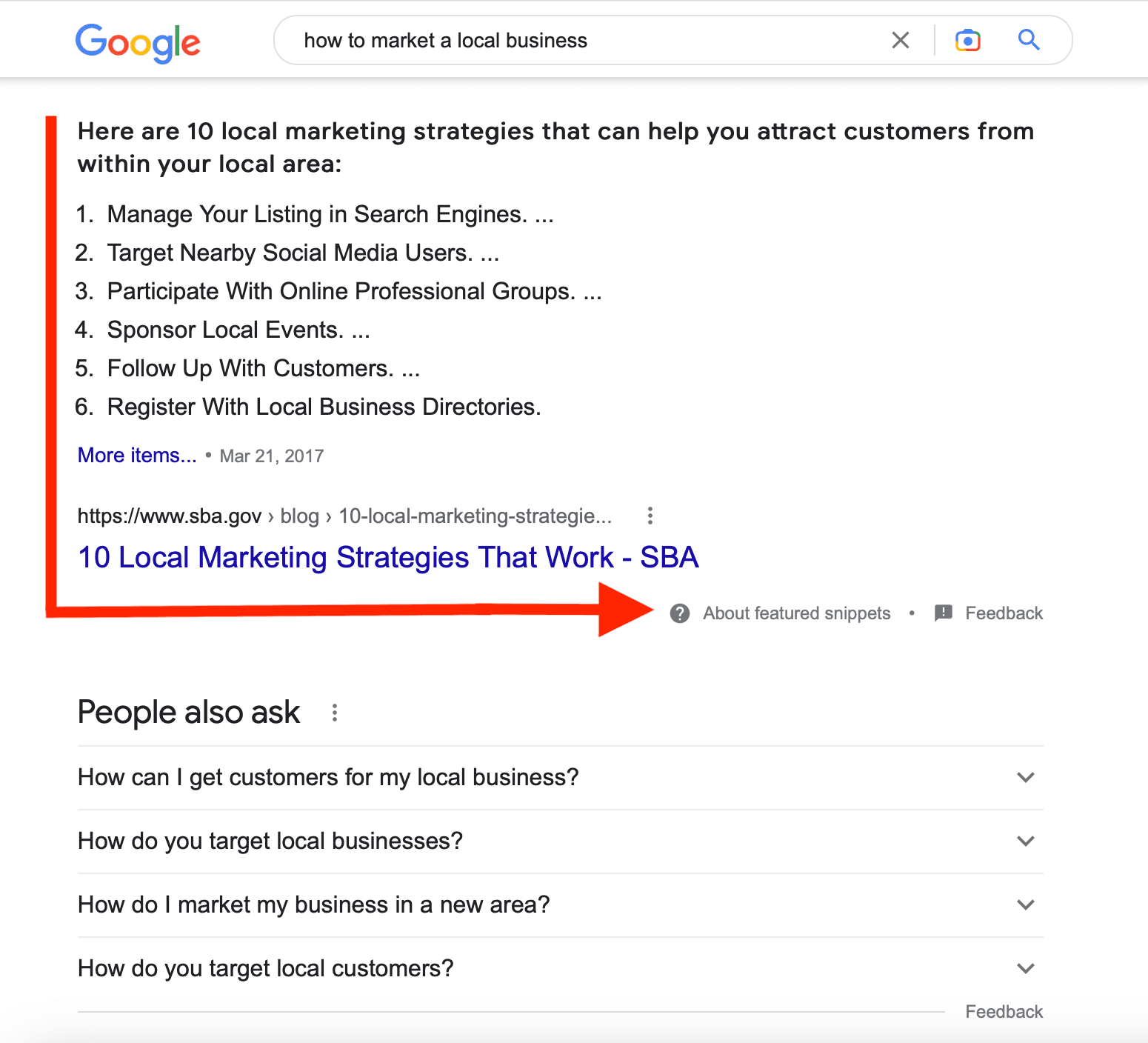
Voice Search Queries and Conversational Queries
Voice search has also accelerated the need for semantic processing. Spoken queries tend to be longer and more conversational, like “What’s the best way to clean white sneakers without bleach?” Semantic understanding helps Google interpret related search queries and return results that match the user’s actual need beyond the words they use.
Understanding User Intent in Semantic SEO
Not all searches are created equal. Some people want a quick fact, others are comparing options, and some are ready to buy. Search intent is the “why” behind the query: the reason someone turns to Google in the first place. And in a world powered by semantic SEO, understanding that “why” is more important than ever.
Semantic SEO helps ensure that your client’s web content aligns with user intent through natural language processing, entity recognition, and behaviour modelling. Google can now interpret intent with remarkable accuracy, and, in turn, expects your client’s content to do the same.
The Four Types of Search Intent
Understanding these intent categories allows marketers to architect high quality content that is purpose-built for the user’s mindset and journey stage:
Informational Intent
These users are looking to learn. They want definitions, explanations, guides, or tips.
Example Query: “How does solar power work?”
Semantic SEO Strategy: Build a rich, educational resource with related terms such as “photovoltaic cells,” “energy efficiency,” and “off-grid systems” to signal deep topical relevance.
Investigational (or Commercial) Intent
These users are researching options before making a decision. They want to evaluate, contrast, and discover.
Example Query: “Best electric cars 2025”
Semantic SEO Strategy: Use structured comparisons that include brands (Tesla, Hyundai Ioniq), features (battery range, fast-charging), and language like “versus,” “review,” and “compare.”
Transactional Intent
These users are ready to take action: make a purchase, sign up, schedule, or contact.
Example Query: “Buy standing desk with monitor arm”
Semantic SEO Strategy: include product schema, trust indicators (e.g., reviews, ratings), clear CTAs like “Buy Now” or “Add to Cart,” and supporting content on dimensions, shipping, and warranty.
Navigational Intent
These users already know where they want to go and are just using search to get there.
Example Query: “Grammarly login”
Semantic SEO Strategy: Ensure branded pages are properly indexed and use structured data (like breadcrumbs and sitelinks) to help Google connect users to the right destination fast.
How Google Determines Intent
Google draws on years of query history, user behaviour, click patterns, and context to determine intent. If millions of users search “Nike Air Max” and consistently click product pages, Google learns this is transactional intent, not informational. Over time, its algorithm adapts to serve the type of content that historically satisfies similar searches.
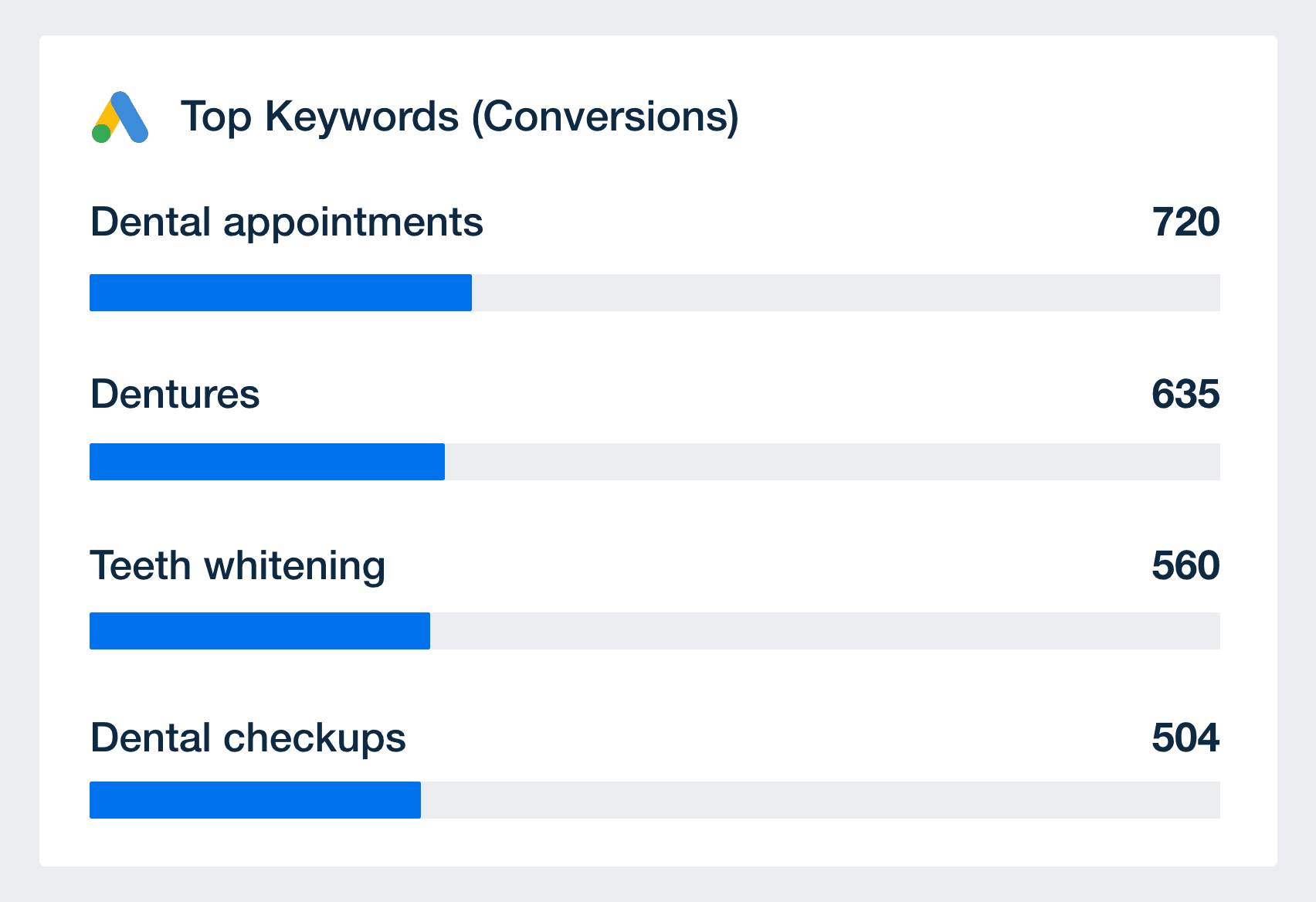
Easily track clients’ top performing keywords by dragging and dropping a widget into your custom dashboard or report. Try AgencyAnalytics free for 14 days!
Creating Content That Mirrors Intent
Semantic SEO empowers you to create content that reflects how users search and think. For example, a blog post titled “How to Choose a Running Shoe” might attract informational searchers. Still, it can include investigational elements (brand comparisons, feature breakdowns) and even transactional CTAs (“Shop our top-rated shoes”).
You can signal intent alignment through:
Clear, descriptive headings
Semantically related keywords
Schema markup for FAQs, products, and reviews
Internal links guiding users through the journey
Addressing Multiple Intents in One Piece of Content
Well-structured content can serve more than one intent, especially in longer-form formats like pillar pages or buying guides.
Example: A page titled “Everything You Need to Know About Electric Bikes” could:
Start with informational content (how they work, how fast they go)
Transition into investigational content (best brands, pricing comparisons)
End with transactional elements (product listings, purchase links)
The key is to use clear sections, thoughtful structure, and semantic cues to help users and search engines easily navigate the page.
How To Optimize for Semantic SEO
At its core, semantic SEO is about meeting people where they are, not just answering their query, but anticipating the layers beneath it. That means moving past keyword lists and creating content ecosystems that reflect real-world needs, language, and behaviour.
Here’s how to put that into action.
1. Conduct Semantic Keyword Research
Traditional keyword tools can still be useful, but they only show part of the picture. To uncover meaningful keyword variations and related terms, go deeper:
Use tools like Google’s “People Also Ask,” “Related Searches,” and autocomplete to find real user phrasing.
Analyze competitor content that ranks well and extract semantically linked phrases using NLP-based SEO tools like Clearscope, MarketMuse, or Surfer.
Explore entities (people, places, things) related to your topic. For example, researching “hiking boots” may surface related entities like “Gore-Tex,” “ankle support,” and “Vibram soles.”
Agency Tip: Ask yourself, “What would someone researching this topic also want to know even if they don’t say it out loud?”
2. Find Semantic Keywords
These need to be words and phrases that share contextual relevance.
For example:
For “gut health,” semantically related terms might include “microbiome,” “probiotics,” “digestive enzymes,” and “IBS relief.”
For “email automation,” related terms could be “drip campaigns,” “behavioural triggers,” and “workflow builder.”
Use Google NLP API, LSIGraph, or TextRazor to analyze pages and pull conceptually related terms.
3. Create Topical Clusters
Search engines no longer reward thin, single-keyword pages. They want depth, breadth, and logical information architecture. That’s where topical clusters come in.
A topical cluster is a group of interlinked content assets that revolve around a central “pillar” topic. It’s one of the most effective ways to demonstrate semantic authority.
The pillar page is a comprehensive overview of a broad topic (e.g., “The Complete Guide to Hiking Gear”).
Cluster pages break out subtopics in detail (e.g., “Best Hiking Backpacks,” “Trail-Ready Water Bottles,” “How to Pack a First Aid Kit for Day Hikes”).
Internal links connect all related content back to the pillar–and to each other–reinforcing semantic relationships.
Google’s algorithms use this structure to understand your expertise, recognize entity connections, and evaluate whether you’re covering the full scope of a topic.
How To Build a Semantic Topic Cluster
Start with a problem your client’s audience wants to solve, not just a high search volume keyword.
Identify supporting questions or stages in the user journey.
Use semantic and traditional keyword research to find natural subtopics.
Ensure every piece is unique, valuable, and internally linked with clear anchor text.
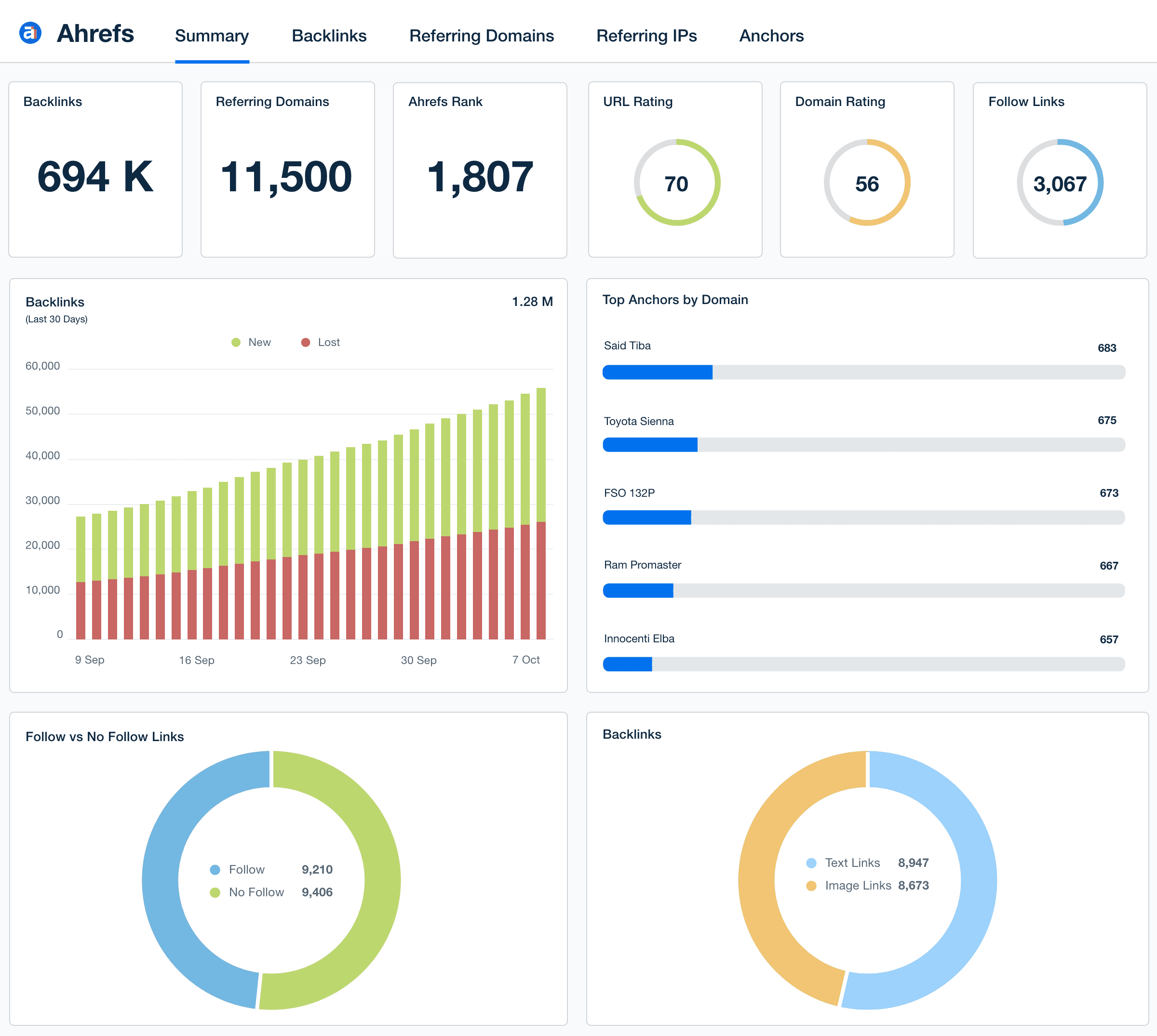
Keep an eye on your client’s semantic SEO performance with the Ahrefs integration in AgencyAnalytics. Combine Ahrefs metrics with data from 80+ marketing integrations–sign up for your free 14-day trial today!
4. Implement Schema Markup and Structured Data
Schema helps Google extract meaning from your client’s content, but don’t just stop at basics like “Organization” or “Article.” For semantic SEO, get more granular:
Use FAQPage, HowTo, Product, Review, and Breadcrumb schema where appropriate.
Mark up entities with @id references to help Google connect the content to the Knowledge Graph.
Validate structured data using Google’s Rich Results Test and Schema.org documentation for the latest standards.
If you're writing about a concept like “Vitamin D,” adding structured data that references “Cholecalciferol” (its scientific entity) can strengthen semantic alignment.
5. Optimize for Featured Snippets
Featured snippets are a direct reward for clear, semantically-rich formatting. Here’s how to increase your chances:
Use short, structured answers (40–60 words) directly after a question-based heading.
Format content using lists, tables, or numbered steps.
Include related entities and intent-matching terms in the snippet block (not just the question).
Example:
<h2>How to waterproof hiking boots</h2>
Follow with a concise step-by-step list using materials, brand names, and context like “wax treatment” and “silicone-based spray” to help Google recognize the response's depth and semantic value.
<p>To waterproof your boots, clean them thoroughly, apply a silicone-based spray or wax treatment, and allow them to dry completely. Repeat every few months for optimal protection.</p>
6. Technical Considerations That Support Semantics
While semantic SEO is content-led, certain technical aspects matter more than ever:
Crawlability: Ensure proper linking and avoid orphaned content
URL Structure: Use clear, descriptive URLs that reflect semantic relationships (e.g., /kitchen-appliances/air-fryers/ninja-review).
Content Layering: Use proper heading hierarchy (H1, H2, H3) to signal topic flow - this helps both users and search engines interpret the structure and relationships of ideas.
Page Speed and Mobile Usability: These don’t directly impact semantics, but they influence whether the content can compete for features like snippets and passage indexing.
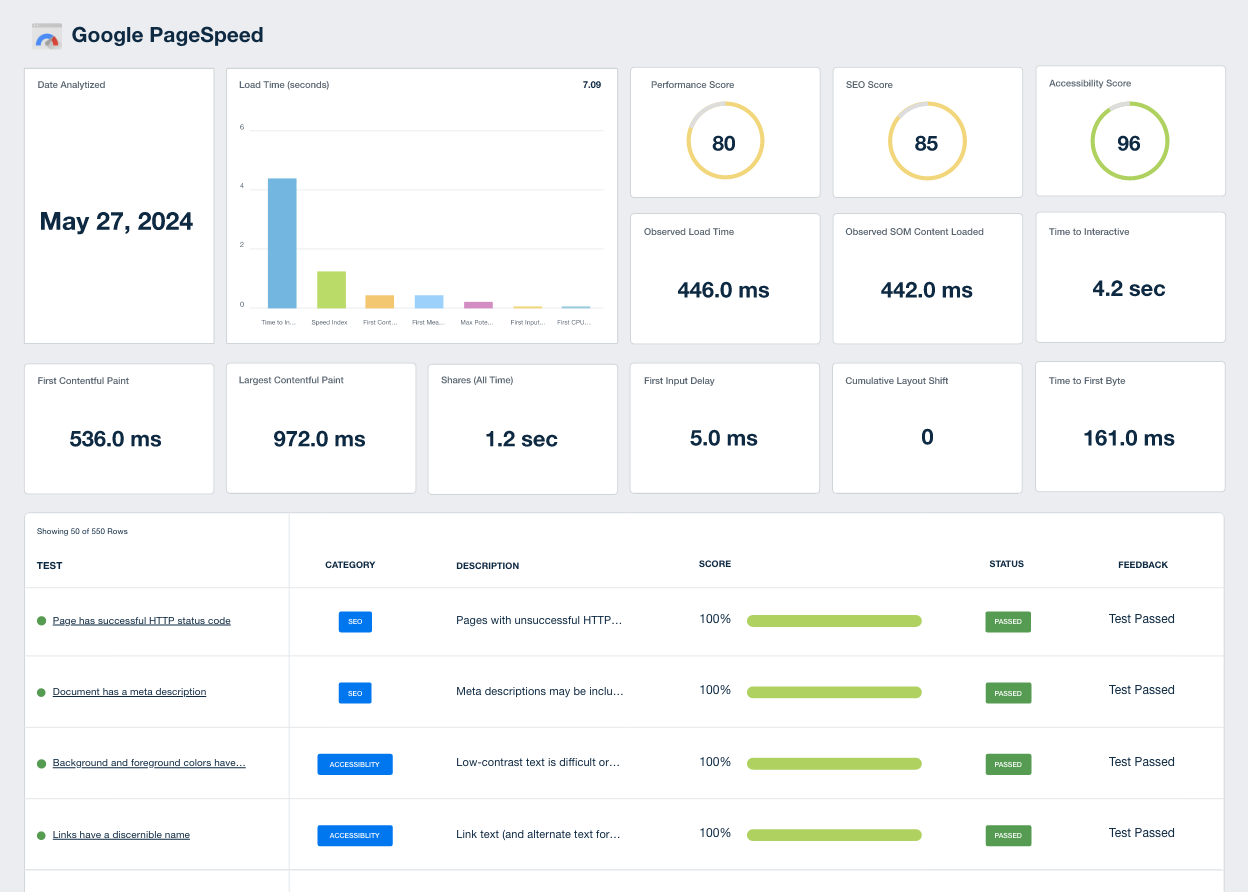
Monitor your clients’ technical SEO with the Google PageSpeed integration in AgencyAnalytics–try it free for 14 days!
Designing Semantic SEO Around the User Experience
Early SEO professionals spent their days trying to outsmart Google: tweaking keyword density, backlink profiles, and meta tags to increase search engine rankings. But in 2025, the tables have turned. Google has spent the last decade decoding us, including how we think, what we search for, what we click on, and what we ignore. As a result, SEO professionals must now design content for humans first, algorithms second.
Semantic SEO aims to solve a problem, fulfill a need, and guide users to the best possible outcome. The more useful and complete your content is, the more likely it is to rank. In other words, user experience is the ranking factor, and semantic optimization is how you deliver it.
User-First Semantic SEO
Semantic SEO naturally supports a user-first mindset. Rather than writing isolated blog posts or transactional pages, you need to structure your clients’ content to reflect the entire search journey:
Awareness: What is the problem or need?
Consideration: What are the options or comparisons?
Decision: What action can the user take now?
A 4,000-word blog post means nothing if it overwhelms the reader. Use:
Clear H2s/H3s to help users scan for what they need
Jump links or sticky tables of contents
Snippets or summary boxes for quick answers
Semantic SEO rewards depth, but structure ensures it’s usable.
User Signals and Semantic Visibility
Google’s understanding of content quality moves past word identification to user behaviour, like click-through rate. This shows whether your title and meta description match the searcher’s intent. Next, dwell time and bounce rate indicate whether the content actually satisfied the query. Finally, return visits suggest long-term value.
SXO: Search Experience Optimization
Search Experience Optimization (SXO) takes the principles of semantic SEO a step further by focusing not just on what content says, but how it functions across the full search journey from query to click to conversion.
SXO is the practice of optimizing for the entire experience a user has with your client’s content. To design content with SXO in mind:
Query: Use titles and meta descriptions that clearly reflect intent.
Landing: Deliver immediate clarity–answer the main question in the first few seconds.
Exploration: Offer internal links, rich visuals, and trust signals (testimonials, data, awards).
Conversion: Guide users with clear CTAs, relevant offers, and frictionless UX.
When a user visits your client’s page and doesn’t have to go anywhere else–because every question is answered, every option is explored, and the next step is obvious–you’ve done your job. That’s the power of combining semantic SEO and SXO: not just reaching the audience, but fully serving them.
Measuring Semantic SEO Success
If traditional SEO measured success by keyword rankings alone, semantic SEO requires a broader, smarter approach. Since your client’s content may rank for hundreds of variations, long-tail phrases, and related topics–many of which you didn't explicitly target–it's critical to track the performance of meaning, not just terms.
1. Measure Topic Visibility
Use Google Search Console to monitor query diversity, like how many different search terms are triggering impressions or clicks for a given page.
Next, look at total impressions and clicks across all queries, not just high-volume head terms. And don’t forget to segment queries by topic clusters to evaluate topical authority.
If a blog post originally targeting “email automation” is gaining visibility for terms like “workflow builder,” “triggered email campaigns,” and “best time to send emails,” that’s a strong sign your semantic coverage is effective.

Pull Semrush data into a sleek, white labeled SEO report with AgencyAnalytics! Demonstrate agency ROI in just a few clicks. Check it out with your free 14-day trial.
2. Track User Behaviour Signals
Search engines infer quality and relevance from how users interact with your client’s content. Strong semantic performance often results in better engagement, because the content matches intent more precisely.
Key behavioural metrics to watch:
Click-Through Rate (CTR): Are users drawn to your client’s content based on title and meta description?
Dwell Time/Engagement Time: Do users stay and read, or bounce quickly?
Scroll Depth: Are they consuming more than just the intro?
Pogo-Sticking: Do users return to the search results, or does the content satisfy them?
3. Use Google Search Console for Semantic Clues
Search Console is full of semantic gems. Here’s how to mine it for insights:
Under Performance > Queries, look beyond your “target keywords” to find unexpected phrases your client is ranking for. These often reveal semantic connections Google has made.
Check landing pages that rank for diverse queries. Are those pages covering multiple facets of a topic well?
Use the Compare feature to track how query diversity changes over time. Growing variation = growing semantic authority.
Future of Semantic SEO With Google
Google’s evolution toward deeper understanding will only accelerate, and agencies that adapt now will be positioned to lead in what comes next. Here’s what your agency needs to know about the future of SEO:
AI Is Making Search Smarter (and More Human)
Google’s AI models like BERT and MUM already interpret meaning across languages, formats, and search styles. Expect even more focus on:
Multimodal search (text, video, and images together)
Entity recognition across all content types
Deeper context behind queries, especially long-form and conversational
Search Generative Experience (SGE) Is Reshaping Results
SGE introduces summaries and snapshots created by AI, answering questions without users ever clicking through. To stay visible:
Focus on expertise and originality
Use schema and structured content to help AI understand your authority
Ensure content still satisfies complex intent (not just surface-level answers)
Prepare for a Semantic-First Future
To thrive in this environment, build content around topics, not terms. Take time to prioritize user intent and experience, which will lead you to measure success by impact, not just search rankings.
Final Thoughts
As Google deepens its understanding of how people search, marketing agencies must deepen their understanding of how people think.
Rankings follow relevance. Relevance follows meaning. And meaning begins with the user.

Written by
Brock Murray is a marketer with expertise in SEO and paid advertising. In 2012, he co-founded seoplus+, a successful marketing agency in Canada.
See how 7,000+ marketing agencies help clients win
Free 14-day trial. No credit card required.



